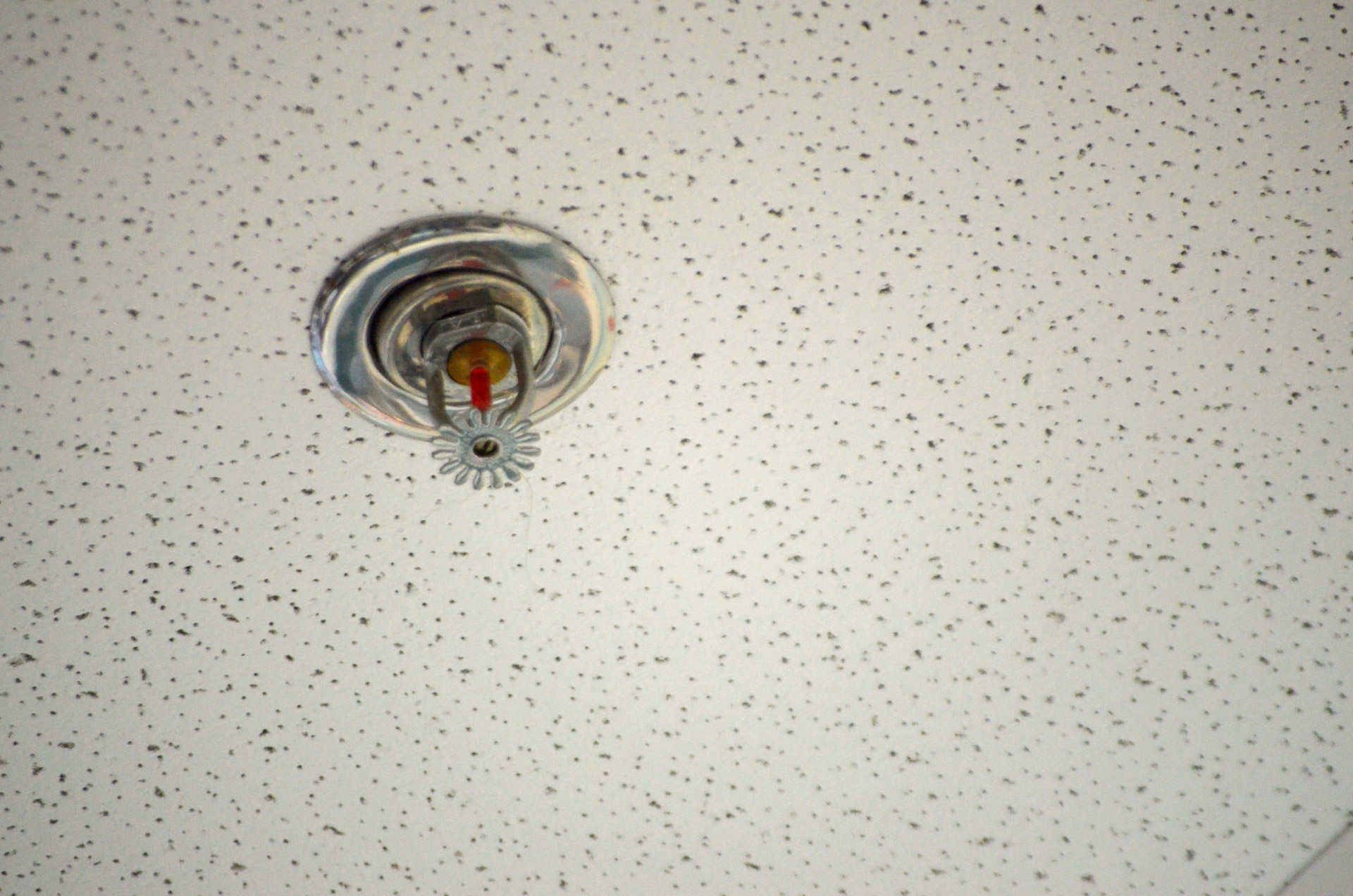Sprinkler head
Contents |
[edit] Introduction
An automatic sprinkler system consists of a water supply (tank, pump and valves) and sprinkler installation (pipes and heads). Almost all buildings over 30m high must be fitted with a sprinkler system installed in accordance with the appropriate British Standards.
The specification of the design depends primarily on the hazard classification of the occupancy of the building. The specifications include head spacing dimensions, assumed area of maximum operation (number of heads in-operation), design density (water discharge), water supply period and tank volume.
[edit] How do sprinkler heads work?
Sprinkler heads are heat sensitive devices that consist of a plug, a glass ampule or other trigger mechanism, deflector, cap and frame.
The system’s heat sensitive element can be constructed from soldered links or glass bulbs containing various liquids. Some sprinkler head ampules contain a mixture of alcohol and water or glycerin and water. When hot air reaches the ceiling, this liquid expands, causing the container to break and activate the sprinkler head so it can distribute water and extinguish the fire.
Sprinkler heads normally activate at 68°C. Each sprinkler head acts as its own heat detector and only those in the area of the fire will be activated. An individual sprinkler head typically covers 9m².
The flow of water from the sprinkler head is generally distributed by a flower-shaped deflector device directly below the sprinkler. This shape is designed to control the flow of the water so it is evenly distributed.
[edit] Sprinkler head variations
There are quick response (QR) fire sprinkler heads which have a smaller ampule so they can activate in a shorter period of time. These devices typically distribute water across the ceiling or down walls as a method of controlling fire by preventing it from rising.
QR sprinkler heads tend to be used in places where many people may be present and life safety is a priority.
Standard response sprinkler heads tend to be used in facilities where there is a greater need to protect the contents of a building.
There are several different sprinkler head orientation options. The most common are:
- Pendant heads use a convex deflector to distribute water in a domed or conical pattern.
- Upright heads spray water upwards to a concave deflector, producing a dome-shaped spray pattern.
- Sidewall heads have a semicircular deflector that produces a crescent-shaped spray pattern.
- Concealed heads are pendant or sidewall sprinkler heads that have been covered with a fire sprinkler cover plate. This cover lowers when a certain temperature has been reached. The fire sprinkler head is then revealed so it is able to activate.
[edit] Related articles on Designing Buildings Wiki
Featured articles and news
Infrastructure that connect the physical and digital domains.
Harnessing robotics and AI in challenging environments
The key to nuclear decommissioning and fusion engineering.
BSRIA announces Lisa Ashworth as new CEO
Tasked with furthering BSRIA’s impressive growth ambitions.
Public buildings get half a million energy efficiency boost
£557 million to switch to cleaner heating and save on energy.
CIOB launches pre-election manifesto
Outlining potential future policies for the next government.
Grenfell Tower Inquiry announcement
Phase 2 hearings come to a close and the final report due in September.
Progress from Parts L, F and O: A whitepaper, one year on.
A replicated study to understand the opinion of practitioners.
ECA announces new president 2024
Electrical engineer and business leader Stuart Smith.
A distinct type of countryside that should be celebrated.
Should Part O be extended to existing buildings?
EAC brands heatwave adaptation a missed opportunity.
Definition of Statutory in workplace and facilities management
Established by IWFM, BESA, CIBSE and BSRIA.
Tackling the transition from traditional heating systems
59% lack the necessary information and confidence to switch.
The general election and the construction industry
As PM, Rishi Sunak announces July 4 date for an election.
Eco apprenticeships continue help grow green workforce
A year after being recognised at the King's coronation.
Permitted development rights for agricultural buildings
The changes coming into effect as of May 21, 2024.






















